Tucked away in the northernmost reaches of the UAE, Wadi Shaam in Ras Al Khaimah is a remarkable destination where history, culture, and rugged mountain landscapes converge. This abandoned mountain settlement, once home to the Shihhuh tribe, offers a rare window into traditional Emirati life before the rapid modernization of the region.
For travelers seeking an off-the-beaten-path experience, Wadi Shaam provides a peaceful retreat into the past, with its weathered stone houses, ancient agricultural terraces, and dramatic vistas of the Hajar Mountains. Whether you are a history enthusiast, an avid hiker, or simply someone looking to escape the bustle of city life, this forgotten village is a destination worth exploring.
The Historical Significance of Wadi Shaam
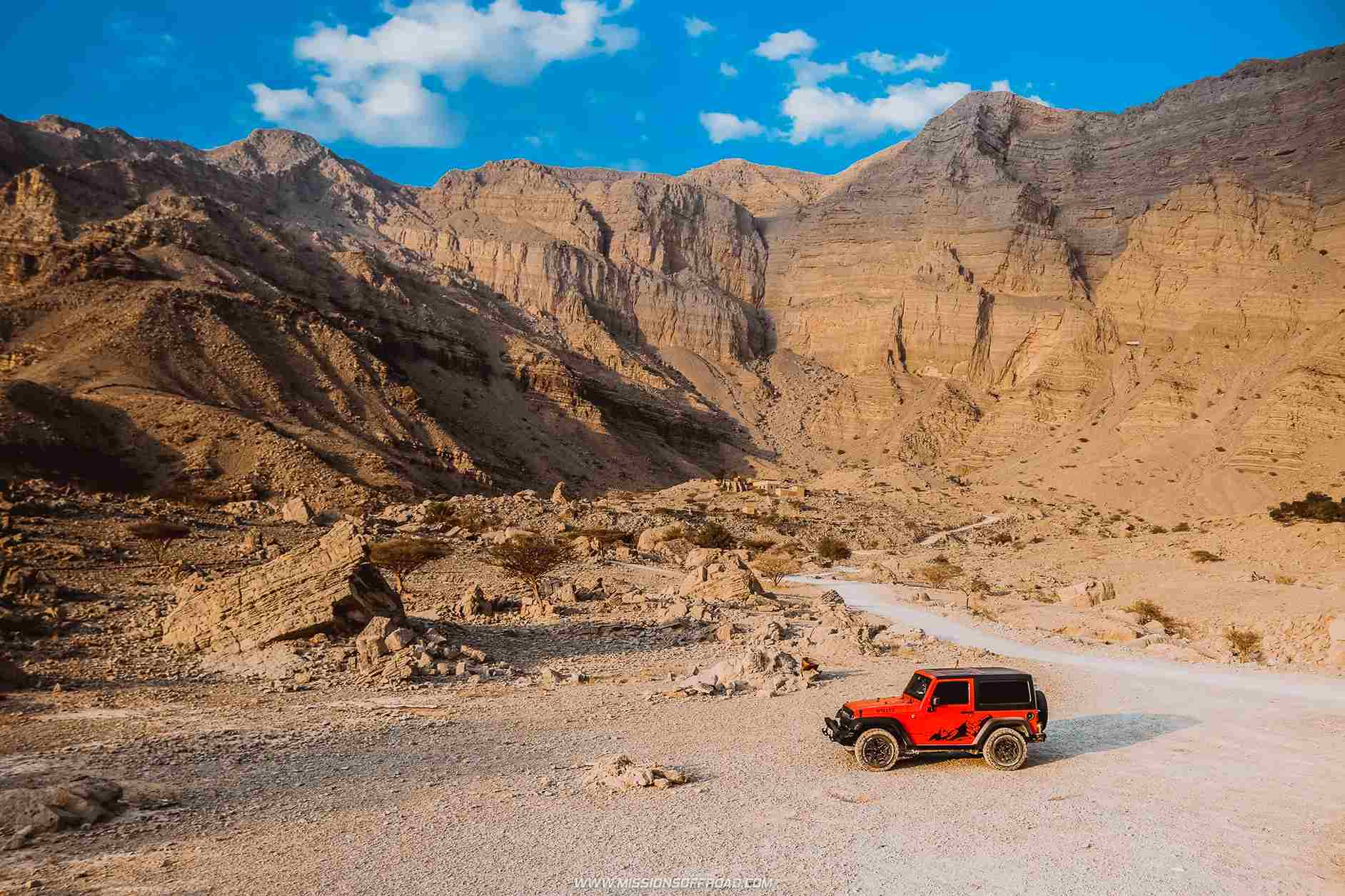
The Shihhuh Tribe and Their Way of Life
Wadi Shaam was established by the Bani Shutair, a branch of the Shihhuh tribe, known for their resilience and deep connection to the land. The Shihhuh were skilled traders, farmers, and pearl divers, playing a crucial role in Ras Al Khaimah’s economy during the 18th and 19th centuries.
- Pearl Trade: The village thrived during the peak of the pearl diving industry, with locals harvesting oysters from the Persian Gulf. However, the trade declined in the early 20th century due to the advent of cultured pearls.
- Mountain Agriculture: Residents cultivated barley and wheat on terraced slopes, using an intricate network of channels to irrigate their crops with seasonal rainwater.
- Seasonal Migration: During the summer months, villagers moved to coastal areas for date farming and fishing, returning to the mountains in the cooler seasons.
Abandonment and Modern Shifts
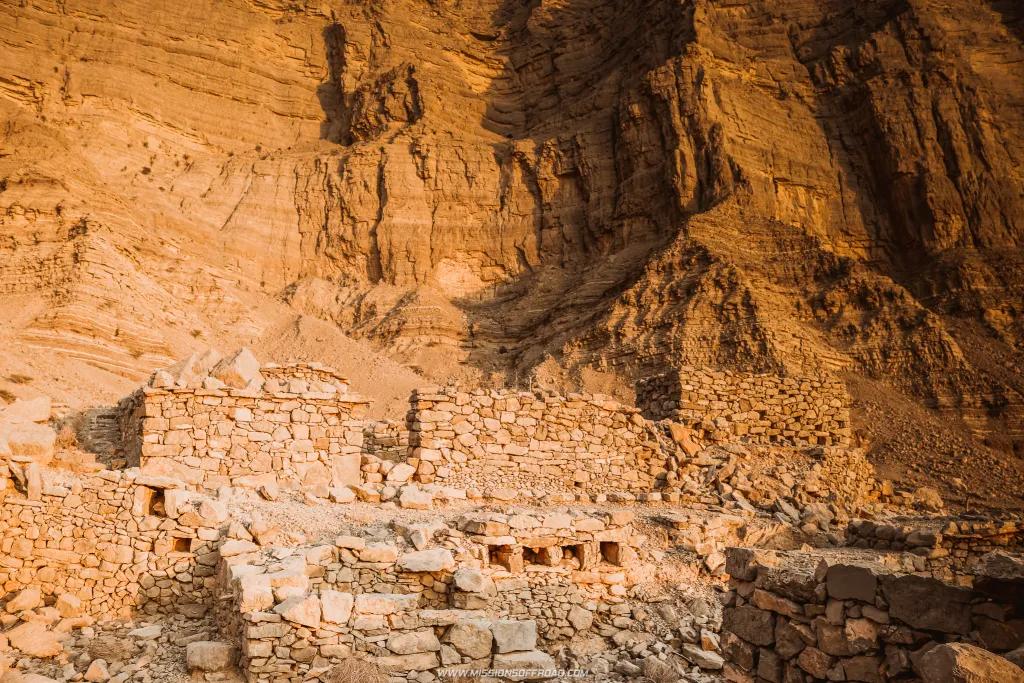
By the late 20th century, urbanization and economic changes led many families to leave their mountain homes for modern settlements near the coast. Today, the silent stone ruins of Wadi Shaam stand as a testament to a vanishing way of life.
Exploring Wadi Shaam: What to See and Do
1. The Abandoned Stone Village
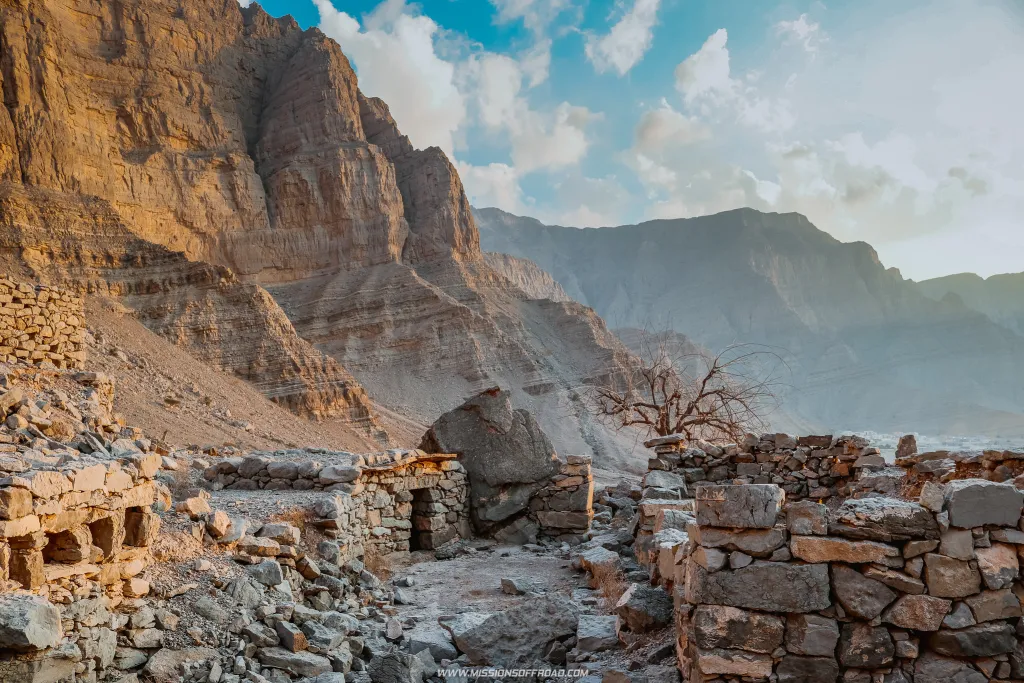
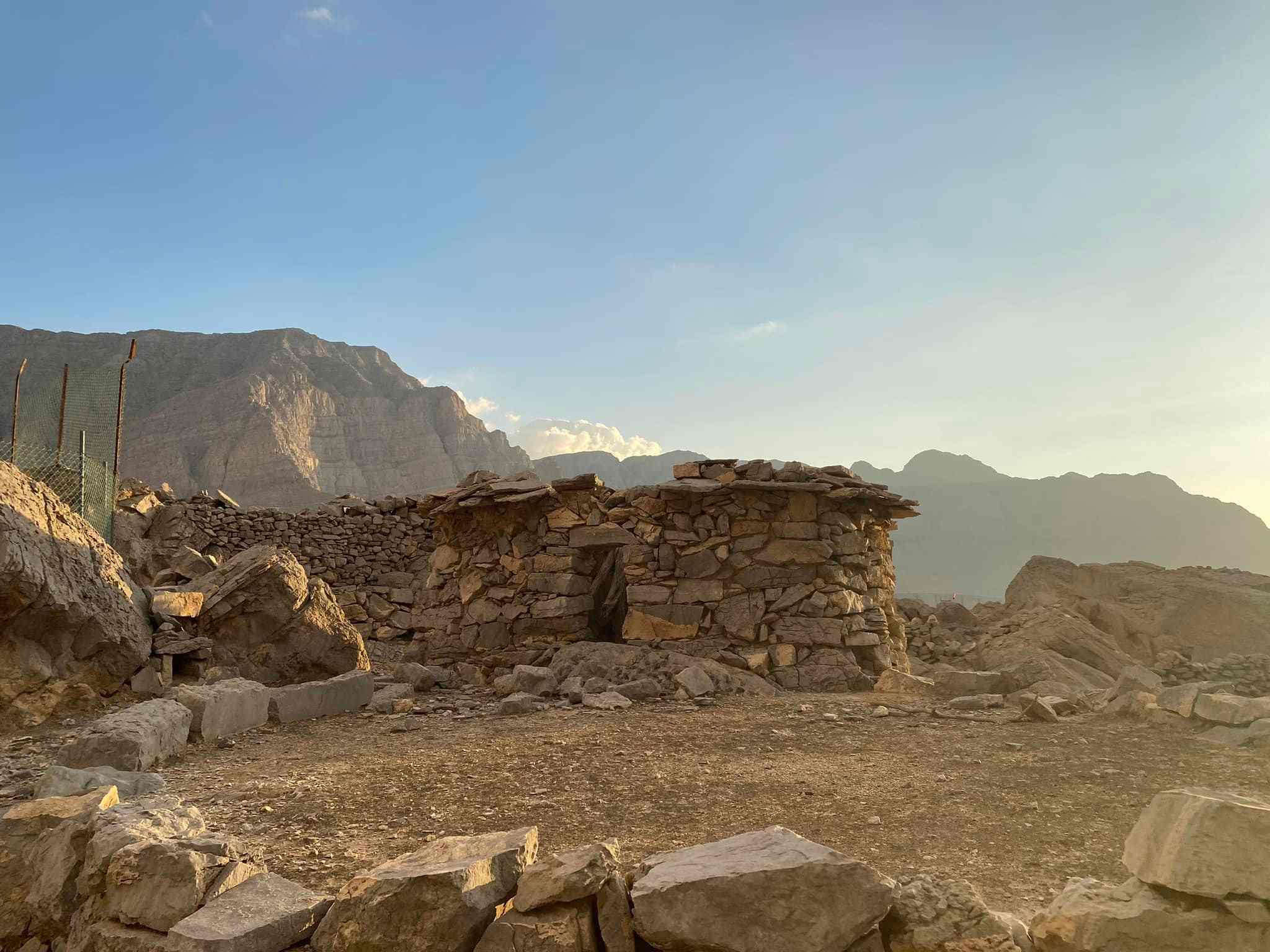
Wander through the crumbling stone houses, some still standing with their original mud-plastered walls and roofs made from palm fronds. The narrow pathways between the structures offer a glimpse into the daily lives of the past inhabitants.
Photography Highlights:
- The ancient agricultural terraces carved into the mountainside.
- The panoramic views of the Hajar Mountains, especially at sunset.
2. Hiking Trails Through the Wadi and Mountains
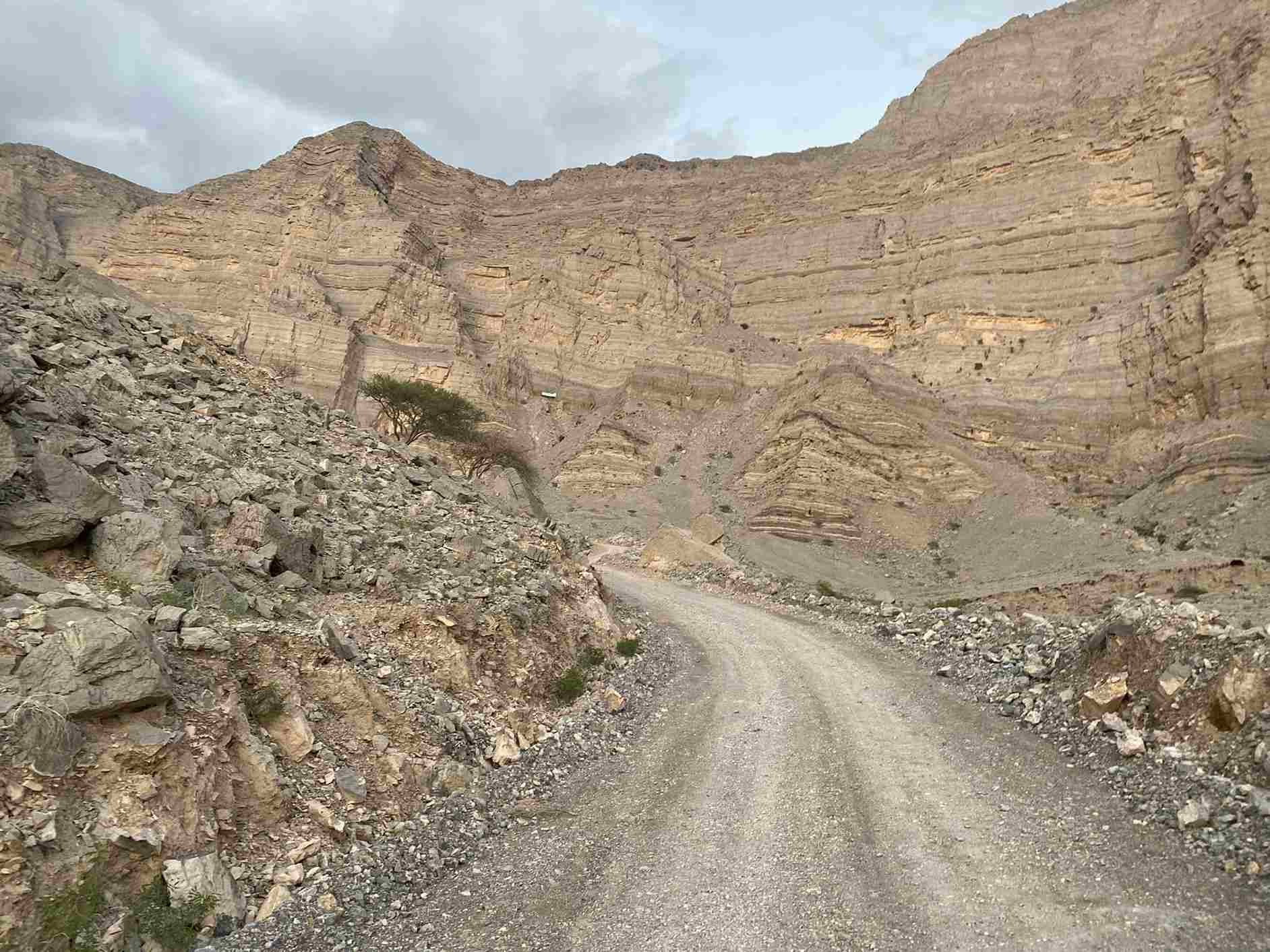
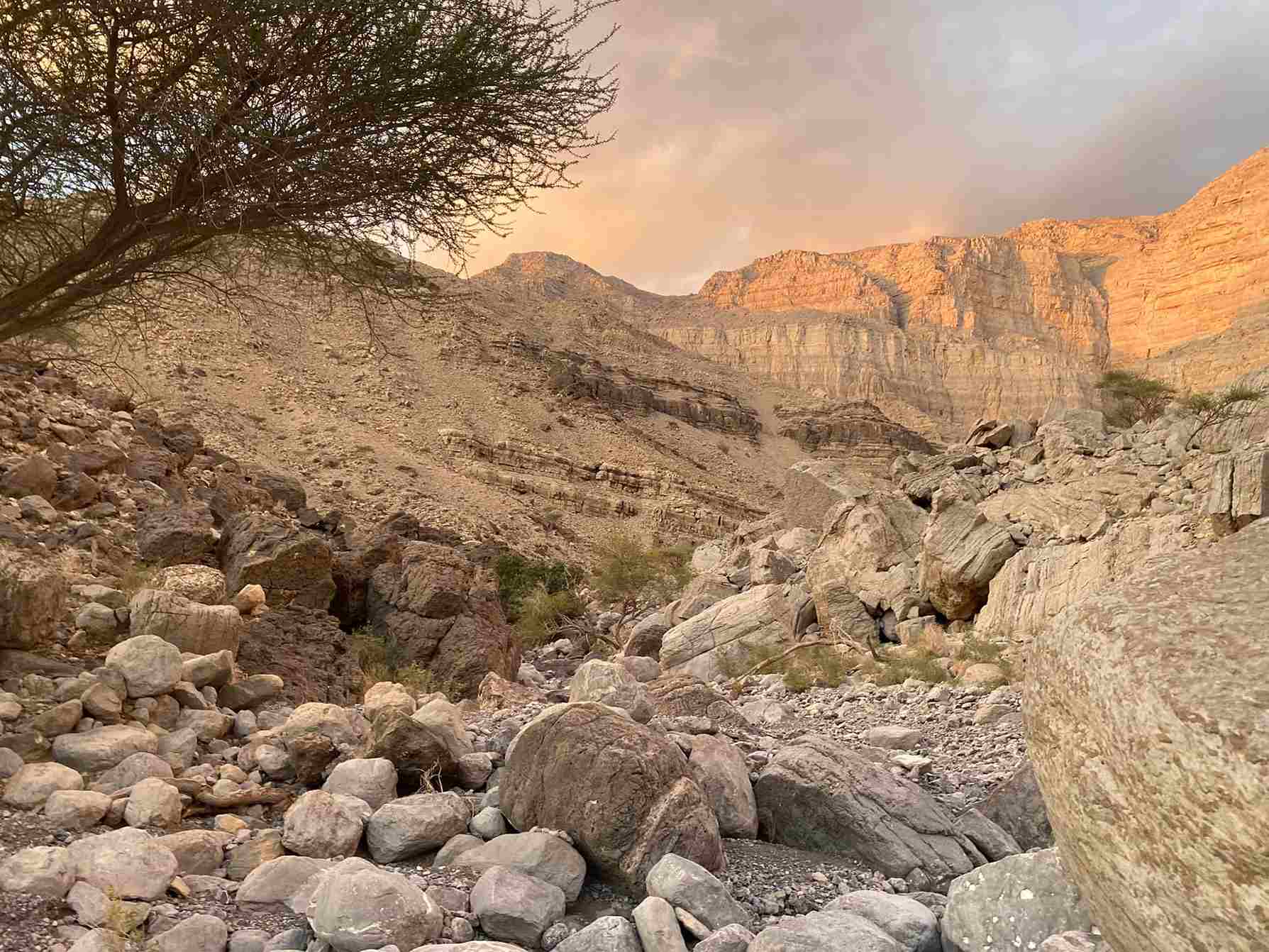
- Easy Walk: A gentle trail leads through the old village and into the wadi (dry riverbed).
- Advanced Hike: Experienced trekkers can attempt the steep ascent toward Oman (note that permits may be required).
3. Nearby Points of Interest
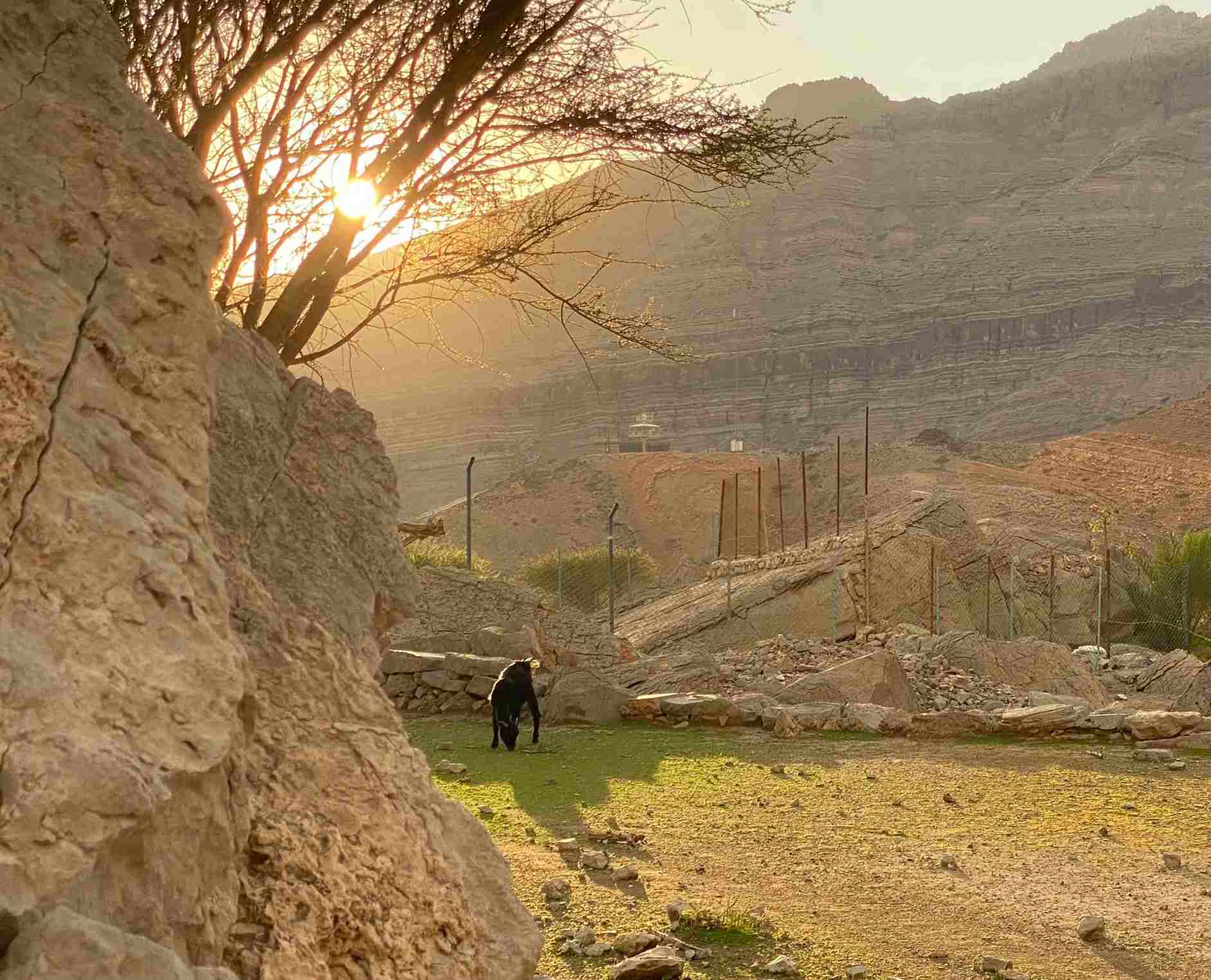
- Wadi Shaam Dam – A scenic stop along the route to the village.
- Shaam Beach – A quiet coastal area ideal for relaxation.
- Al Jeer Fort – A historic site currently closed to visitors but visible from the outside.

How to Reach Wadi Shaam
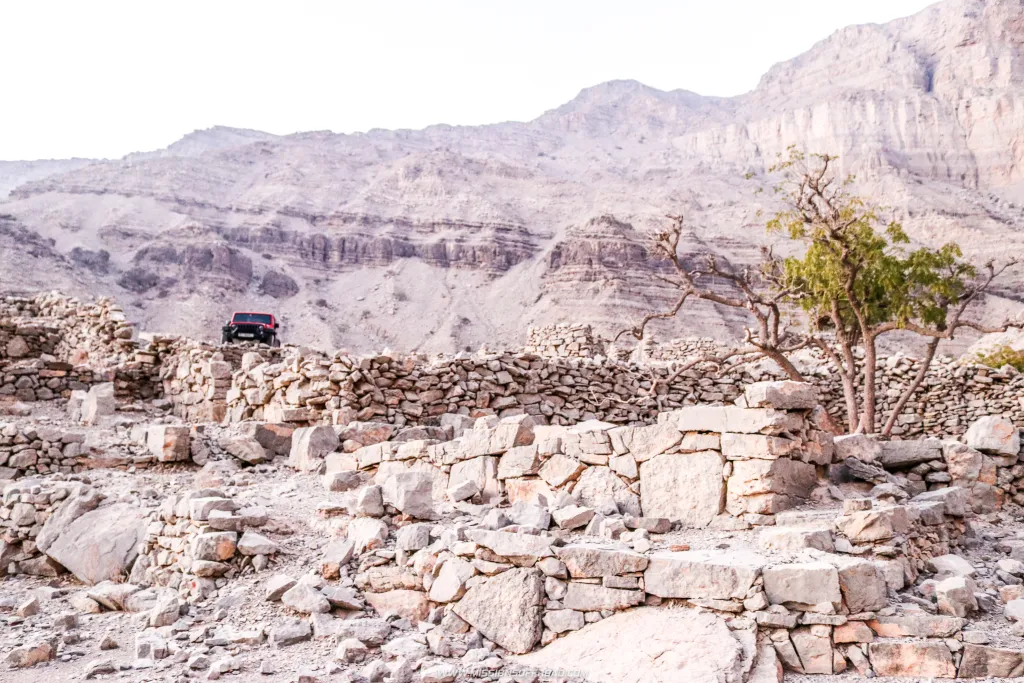
By Car (From Dubai, Sharjah, or Ras Al Khaimah City)
- Take Route E11 toward Ras Al Khaimah.
- Continue to Al Jeer, then follow signs for Wadi Shaam Dam.
- After the dam, take the dirt track leading to the village (a 4×4 is recommended but not strictly necessary).
Parking Coordinates
- Standard Cars: 26.051142, 56.148062
- 4×4 Parking (Closer to the Ruins): 26.054584, 56.150075
Important Notes
- The area is near the Oman border, so occasional military patrols may be present.
- Camping is not permitted as it is a residential zone.
Essential Tips for Visiting Wadi Shaam

Best Time to Visit
- Winter months (November to March) for cooler temperatures.
- Early morning or late afternoon for the best lighting and comfortable weather.
Vehicle Recommendations
- A 4×4 is ideal but not mandatory (sedans can reach the first parking point).
What to Bring
- Sturdy hiking shoes for navigating rocky terrain.
- Sun protection, including a hat and sunscreen.
- Sufficient water and snacks, as there are no shops nearby.
- A camera to capture the striking landscapes.
Responsible Tourism
- Carry out all trash, including organic waste, to protect local wildlife.
- Avoid disturbing the ruins to help preserve the historical site.
- Refrain from making campfires (use portable stoves if needed).

Nearby Attractions to Explore

- Wadi Haqeel (Additional abandoned stone villages)
- Jebel Jais (The highest peak in the UAE)
- Dhayah Fort (A historic hilltop fortress)
Wadi Shaam is more than just an abandoned village—it is a living relic of Emirati heritage. Walking among the ruins, one can almost sense the echoes of the past: the laughter of children in the alleyways, the labor of farmers tending their crops, and the preparations of fishermen setting out to sea.
For those drawn to history, hiking, and unspoiled nature, this secluded corner of Ras Al Khaimah is a must-visit. Whether you spend an hour exploring the ruins or a full day trekking through the mountains, Wadi Shaam promises a memorable journey into the UAE’s past. Plan your trip today and step back in time at Wadi Shaam.










